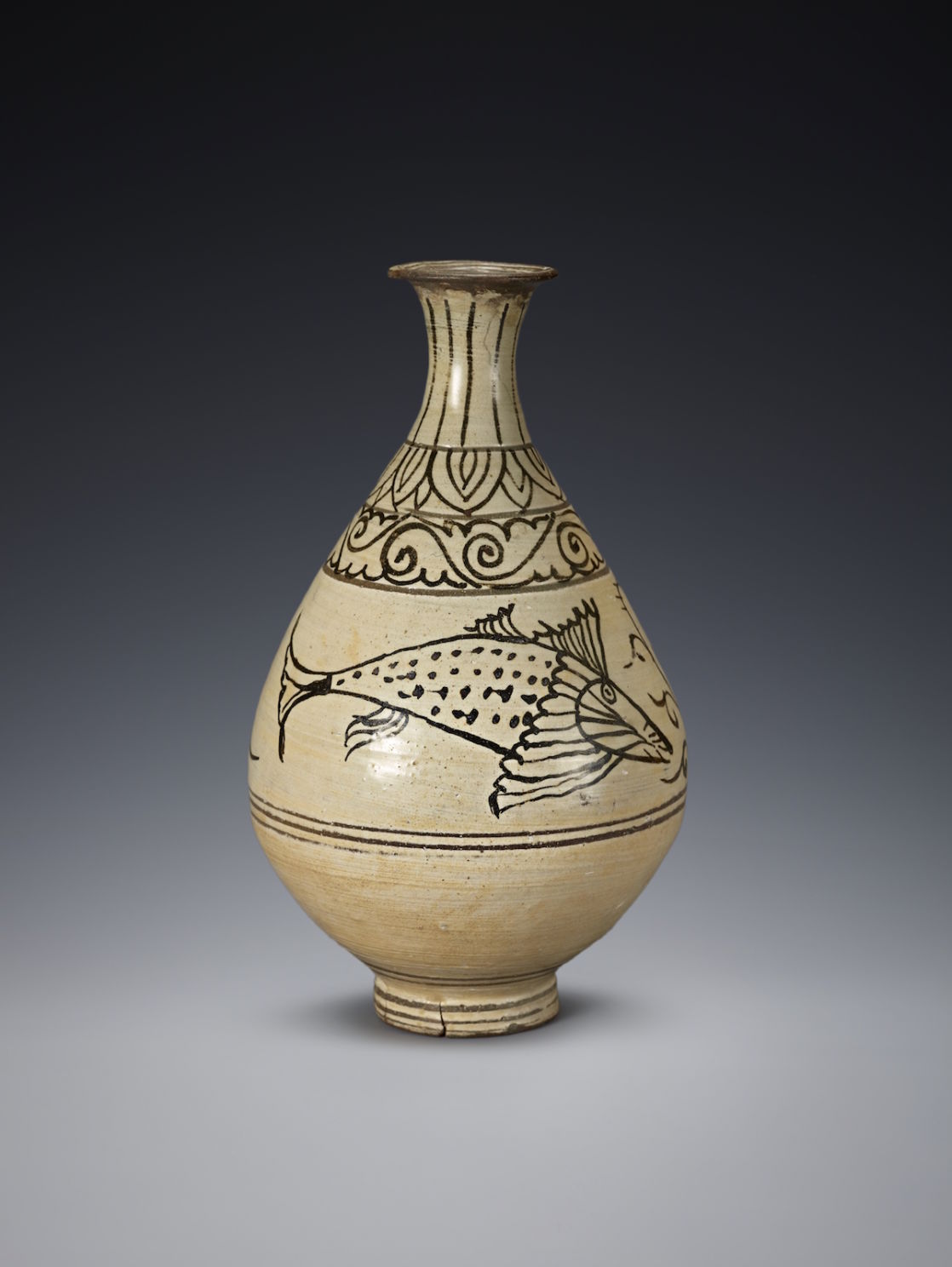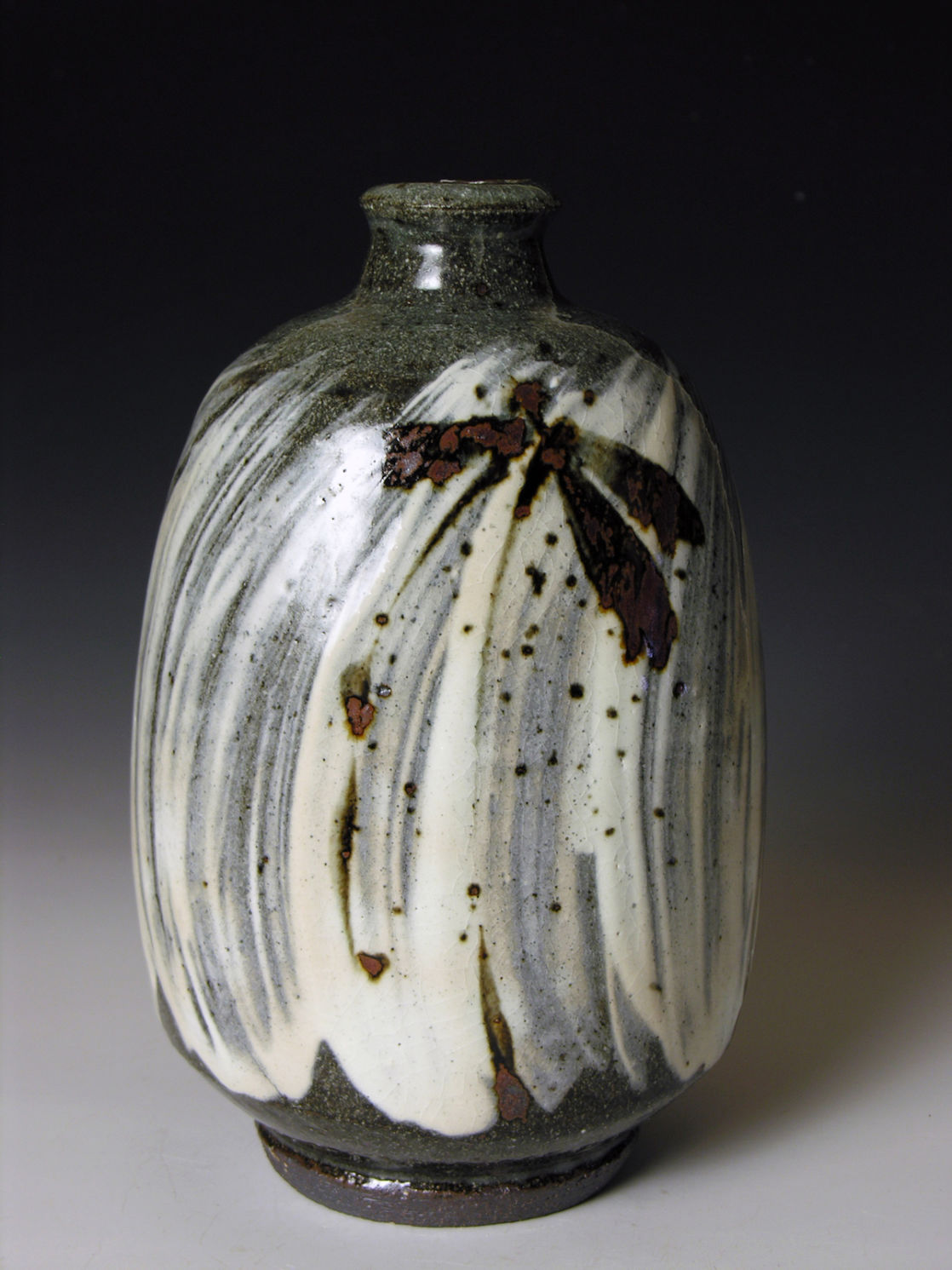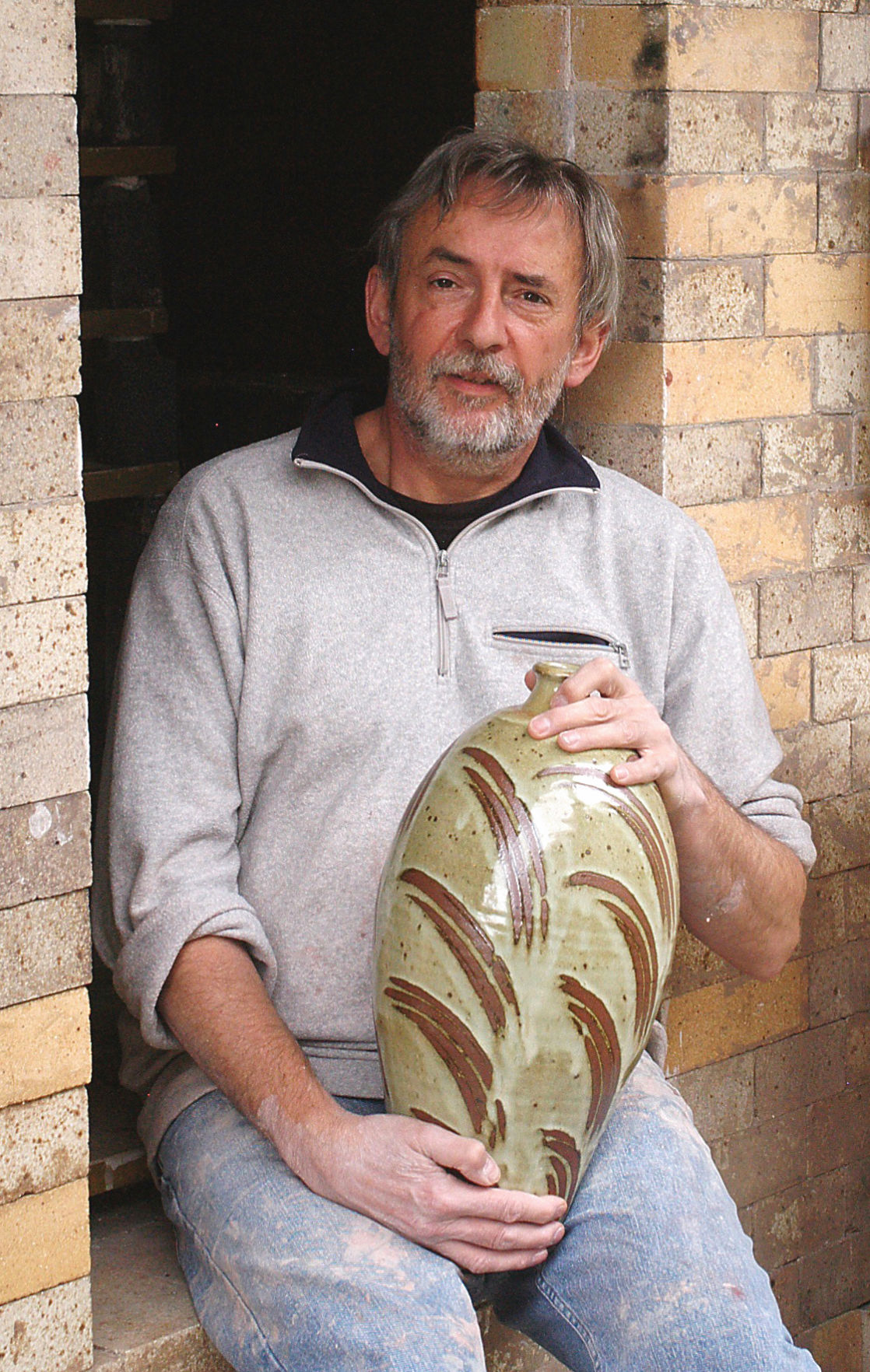Welcome to Ceramic Review
Ceramic Review is the magazine for contemporary and historical ceramics, ceramic art and pottery.
Ceramic Review Issue 334
July/August 2025
Ceramic Review is the magazine for contemporary and historical ceramics, ceramic art and pottery.
July/August 2025
Time spent in South Korea had a huge impact on Phil Rogers. Inspired by the local Buncheong pottery, here he discusses the influence the style of making has had on his own work and the wider world of Western studio pottery.

Joseon dynasty buncheong bottle from the 15th century. Photo: © Leeum, Samsung Museum of Art
In September 1997 I went, by invitation of Chungnam National University, to live and work in South Korea for three months. My home was a small house in the village of Sangsin-ri, about 10 miles from the city of Daejeon, two hours south of the capital Seoul. The village, nestled in a wooded valley surrounded by rice fields, is almost entirely populated with potters, centred around a traditional communal, six-chamber climbing kiln. Each morning as I drew back the curtains I could see the forested outline of Gyeryongsan, a mountain sacred to many Koreans just a couple of miles away. I was soon to learn that the area around Gyeryongsan was very important to the history of Buncheong pottery and the whole experience of living in this beautiful and historic place was to have quite an impact on my own work.
Almost from the very beginning of my professional life as a potter I have been drawn towards Korean ceramics of the 15th and 16th centuries. Buncheong is a contemporary term that describes a dynamic, bold, often whimsical and strangely modern ceramic type that was made throughout the Korean peninsula during the first 200 years of the Joseon dynasty (roughly speaking the 15th and 16th centuries). The style of pots is typified by three elements in its manufacture: dark, iron rich clay; white slip; and a clear, sometimes grey or pale green glaze. The clay that was available to the potters tended to be iron rich, and in order to introduce lighter tones to their finished pieces, a white slip was used to coat the dark clay. Buncheong sagi translates literally as ‘greyish-blue ceramic wearing white make-up’.
There are seven traditional means of decorating Buncheong with white slip. My favourite and the one with which I have the greatest connection is called Cheolhwa, the painting of designs in iron pigment onto the white slip surface. It is this technique for which the potters of Gyeryongsan are well known. The images were drawn with exuberance and a direct, confident and spontaneous approach. Stylised, childlike drawings of fish, birds, animals, flowers, trees and plants adorn the pots with an innate sense of composition and placement… a form of art which we might today refer to as ‘naive’ or ‘unsophisticated’.
It is sometimes thought that Buncheong was a form of crude pottery for the common man that superseded the elegant and refined porcelains of the Goryeo period; that assumption is not entirely fair. Buncheong owes much of its decorative technique to the Goryeo porcelains – inlaid white clay particularly – and was often made specially for government and provincial officers, and for the homes and offices of other high-ranking officials. Indeed, the government took over control of all Buncheong kilns nationally and built royal kilns in Gwangju. The style faded away by the end of the 16th century and gave way to the white porcelains of the later Joseon period.
Buncheong has had a profound and lasting influence on Western studio pottery, largely because of the impact it had upon the works of Shōji Hamada and Bernard Leach and subsequently upon their respective careers. Both potters experienced pottery being made in the countryside of Korea at the turn of the 20th century while visiting with their Japanese mentor Yanagi Sōetsu. The anonymous, inexpensive, utilitarian pots appealed to Sōetsu who espoused similar thoughts about the craft versus industrialisation debate as William Morris. He coined the word Mingei to describe just these kinds of handmade objects – Buncheong is typified by the same unpretentious swiftness in its making that the potters observed in the traditional Onggi pots they had sought out and watched being made. Hamada once wrote in admiration: ‘The Koreans don’t mind anything; they are casual and are not concerned at all about how they do things. They know what the pot needs and they do it… Whether the pot is crooked or not is not important to the Koreans; they turn off large chunks of clay – sometimes the foot is uneven, and often the bowl is better because of it…’

Phil Rogers, square bottle with gwiyal iron brush patter. Photo: courtesy of the artist

Phil Rogers. Photo: Ben Boswell
Even though the time span for Buncheong was barely 200 years many potters working presently in Korea have revived the techniques and contemporary versions can be seen in a many shops and galleries in Seoul. Contemporary Korean Buncheong potters such as Lee Kang-hyo and Choi Sung-Jae have cemented a place for themselves internationally, while globally with its beauty in imperfection, and its direct, spontaneous and wonderful idiosyncrasies Buncheong remains a very strong influence for a great many studio potters. Today, both the National Museum in Seoul and the Leeum Museum also in Seoul, both have large and wonderful collections.
In making my new pieces I have tried to take the three important elements of Buncheong – dark clay, white slip, and a clear glaze – and my inspiration from the potters of Gyeryongsan to devise my own vocabulary of iron painted motifs. Those who know my work will appreciate that this is something of a departure from the decorative treatments I usually employ, working as I do into the surface of the clay. I haven’t left those previous techniques behind, however, brush pattern is a whole new area and thereby a fresh challenge for me. There is some way to go but I hope this new approach will sit comfortably alongside other facets of my work as a further expression of my own way with clay.
For more information visit philrogerspottery.com. This article is taken from Ceramic Review issue 296 (March/April 2019). For more, subscribe below.